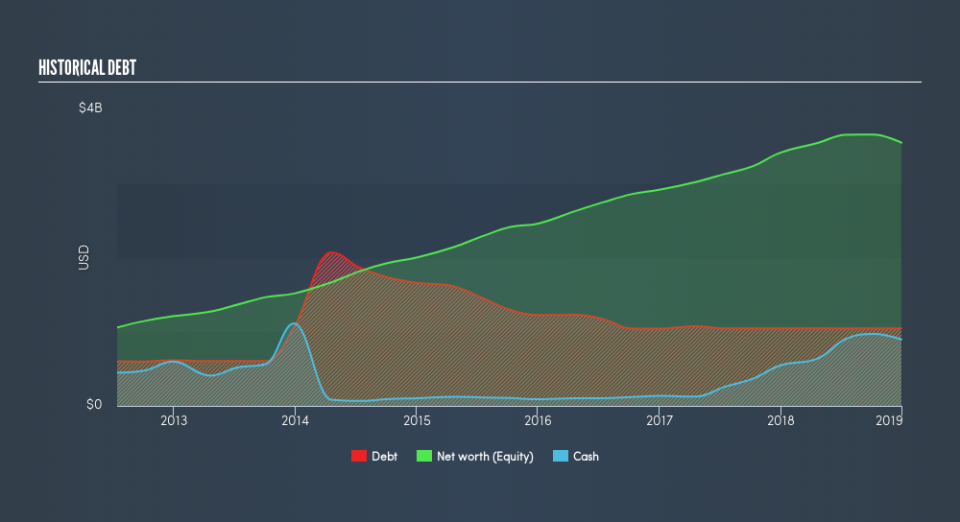Is Advance Auto Parts, Inc. (NYSE:AAP) A Financially Strong Company?

Investors looking for stocks with high market liquidity and little debt on the balance sheet should consider Advance Auto Parts, Inc. (NYSE:AAP). With a market valuation of US$12b, AAP is a safe haven in times of market uncertainty due to its strong balance sheet. These firms won’t be left high and dry if liquidity dries up, and they will be relatively unaffected by rises in interest rates. Today I will analyse the latest financial data for AAP to determine is solvency and liquidity and whether the stock is a sound investment.
See our latest analysis for Advance Auto Parts
AAP’s Debt (And Cash Flows)
AAP has sustained its debt level by about US$1.0b over the last 12 months which accounts for long term debt. At this constant level of debt, the current cash and short-term investment levels stands at US$897m to keep the business going. Additionally, AAP has generated US$811m in operating cash flow in the last twelve months, resulting in an operating cash to total debt ratio of 78%, signalling that AAP’s current level of operating cash is high enough to cover debt.
Does AAP’s liquid assets cover its short-term commitments?
With current liabilities at US$3.9b, the company has maintained a safe level of current assets to meet its obligations, with the current ratio last standing at 1.57x. The current ratio is calculated by dividing current assets by current liabilities. Usually, for Specialty Retail companies, this is a suitable ratio since there is a bit of a cash buffer without leaving too much capital in a low-return environment.
Does AAP face the risk of succumbing to its debt-load?
AAP’s level of debt is appropriate relative to its total equity, at 29%. AAP is not taking on too much debt commitment, which can be restrictive and risky for equity-holders. We can test if AAP’s debt levels are sustainable by measuring interest payments against earnings of a company. Net interest should be covered by earnings before interest and tax (EBIT) by at least three times to be safe. In AAP's case, the ratio of 12.58x suggests that interest is amply covered. It is considered a responsible and reassuring practice to maintain high interest coverage, which makes AAP and other large-cap investments thought to be safe.
Next Steps:
AAP’s debt level is appropriate for a company its size, and it is also able to generate sufficient cash flow coverage, meaning it has been able to put its debt in good use. Furthermore, the company exhibits an ability to meet its near-term obligations, which isn't a big surprise for a large-cap. Keep in mind I haven't considered other factors such as how AAP has been performing in the past. I suggest you continue to research Advance Auto Parts to get a better picture of the stock by looking at:
Future Outlook: What are well-informed industry analysts predicting for AAP’s future growth? Take a look at our free research report of analyst consensus for AAP’s outlook.
Valuation: What is AAP worth today? Is the stock undervalued, even when its growth outlook is factored into its intrinsic value? The intrinsic value infographic in our free research report helps visualize whether AAP is currently mispriced by the market.
Other High-Performing Stocks: Are there other stocks that provide better prospects with proven track records? Explore our free list of these great stocks here.
We aim to bring you long-term focused research analysis driven by fundamental data. Note that our analysis may not factor in the latest price-sensitive company announcements or qualitative material.
If you spot an error that warrants correction, please contact the editor at editorial-team@simplywallst.com. This article by Simply Wall St is general in nature. It does not constitute a recommendation to buy or sell any stock, and does not take account of your objectives, or your financial situation. Simply Wall St has no position in the stocks mentioned. Thank you for reading.


